- Home
- About
- Partners
- Newcastle University
- University of L'Aquila
- University of Manchester
- Alacris Teranostics GmbH
- University of Pavia
- Polygene
- Consiglio Nazionale delle Ricerche
- INSERM
- Certus Technology
- Charité Universitaet Medizin
- GATC Biotech
- University Medical Center Hamburg Eppendorf
- Evercyte GmbH
- University Hospital of Cologne
- PRIMM Srl
- University of Freiburg
- University of Antwerp
- Finovatis
- Research
- SYBIL at a glance
- Bone
- Growth plate
- Desbuquois dysplasia
- Diastrophic dysplasia
- MCDS
- Osteopetrosis
- Osteoporosis
- Osteogenesis imperfecta
- Prolidase deficiency
- PSACH and MED
- Systems biology
- SOPs
- Alcian Blue staining
- Bone measurements
- BrdU labelling
- Cell counting using ImageJ
- Chondrocyte extraction
- Cre genotyping protocol
- DMMB assay for sulphated proteoglycans
- Densitometry using ImageJ
- Double immunofluorescence
- Electron microscopy of cartilage - sample prep
- Extracting DNA for genotyping
- Grip strength measurement
- Histomorphometry on unon-decalcified bone samples
- Immunocytochemistry
- Immunofluorescence
- Immunohistochemistry
- Quantitative X-ray imaging on bones using Faxitron and ImageJ
- Skeletal preps
- TUNEL assay (Dead End Fluorimetric Kit, Promega)
- Toluidine Blue staining
- Toluidine Blue staining
- Von Kossa Gieson staining
- Wax embedding of cartilage tissue
- Contact Us
- News & Events
- Links
- Portal
University of L'Aquila
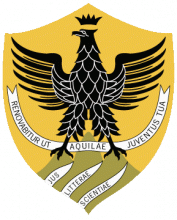 Established in 1952 and located in L'Aquila, administrative centre of the Abruzzo Region, University of L'Aquila is a public teaching and research institution offering a full range of academic programmes including biotechnologies, sciences, economics, engineering, education, humanities, medicine, psychology, and sport sciences. With 7 departments and an annual trunover of over 190million euros, the University of L'Aquila offers its over 20,000 enrolled students 66 degree courses (divided between first and second level degrees), 8 research doctorate programmes, specialisation schools, specializing-master courses and vocational courses. Many members of its distinguished faculty of about 600 professors and researchers have received international recognition and are considered leaders in their fields of research.
Established in 1952 and located in L'Aquila, administrative centre of the Abruzzo Region, University of L'Aquila is a public teaching and research institution offering a full range of academic programmes including biotechnologies, sciences, economics, engineering, education, humanities, medicine, psychology, and sport sciences. With 7 departments and an annual trunover of over 190million euros, the University of L'Aquila offers its over 20,000 enrolled students 66 degree courses (divided between first and second level degrees), 8 research doctorate programmes, specialisation schools, specializing-master courses and vocational courses. Many members of its distinguished faculty of about 600 professors and researchers have received international recognition and are considered leaders in their fields of research.
University of L'Aquila roles in SYBIL
UNIVAQ will provide expertise for prioritisation and generating in vitro, ex vivo and in vivo models of rare and common skeletal diseases (WP1-3) and wil participate in deep phenotyping of these models (WP4). UNIVAQ will also contribute to the identification of biomarkers of skeletal disease especially at the transcriptome level (WP7) and to identification of the new therapuetic targets (WP8) especially for osteoporosis and osteopetrosis. UNIVAQ is also involved in the "Omics Knowledge Factory" (WP5) and systems biology (WP6). Substantial contribution will be given to dissemination (WP9) and management (WP10) activities, serving as deputy coordinator.
Facilities at UNIVAQ include mutational analysis by Perkin-Elmer ABIPRISM 377 DNA sequencer, morphological unit with computer assisted light, fluorescence, phase contrast, Nomarski, confocal and electron microscopy, radioactive servces with isotope handling and labelling of cells and macromolecules, animal facility for maintaining rodent colonies, Hamamatsu Photonics Aequoria luminescnece imaging system for in vivo applications and SKYSCAN 1174 microCT apparatus.
UNIVAQ researchers involved in SYBIL
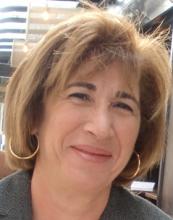 Prof Anna Maria Teti (Head of the Bone Biopathology Laboratory) – Prof. Anna Maria Teti has a long-standing expertise in bone cell biology with an internationally established reputation. In vitro and in vivo studies have a special emphasis on the mechanisms of bone remodelling. Antiresorptive agents are being tested to prevent or cure bone metastases and osteoporosis in experimental animals. Recent work analysing the osteoblast transcriptome under microgravity has identified a novel signalling molecule involved in osteoblast metabolism and osteoblast-osteoclast cross-talk. Professor Teti has long experience of international research collaboration both with groups in USA, Sweden, Germany, France, Belgium and the UK. The group has participated in FP6 projects MetaBre (as coordinator) and OSTEOGENE. Professor Teti is internationally known in the field of bone research having held senior positions of responsibility in the European Calcified Tissues Society, International Bone and Mineral Society and the American Society for Bone and Mineral Research.
Prof Anna Maria Teti (Head of the Bone Biopathology Laboratory) – Prof. Anna Maria Teti has a long-standing expertise in bone cell biology with an internationally established reputation. In vitro and in vivo studies have a special emphasis on the mechanisms of bone remodelling. Antiresorptive agents are being tested to prevent or cure bone metastases and osteoporosis in experimental animals. Recent work analysing the osteoblast transcriptome under microgravity has identified a novel signalling molecule involved in osteoblast metabolism and osteoblast-osteoclast cross-talk. Professor Teti has long experience of international research collaboration both with groups in USA, Sweden, Germany, France, Belgium and the UK. The group has participated in FP6 projects MetaBre (as coordinator) and OSTEOGENE. Professor Teti is internationally known in the field of bone research having held senior positions of responsibility in the European Calcified Tissues Society, International Bone and Mineral Society and the American Society for Bone and Mineral Research.
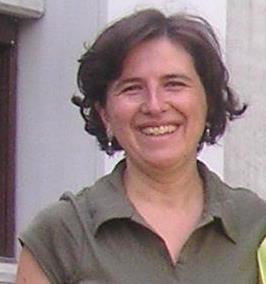 Dr Nadia Rucci (Assistant Professor and Head of the Skeletal Diseases Laboratory) – Dr. Nadia Rucci has a long-standing expertise in bone physiopathology, particularly focused on genetic (osteopetrosis), metabolic (osteoporosis) and oncologic (bone metastases) bone diseases. Her current lines of research are the study of the molecular mechanisms regulating the development of bone metastases and identification of new therapeutic approaches; the study of the effect of mechanical unloading on bone tissue; the identification of new cell- and RNA interference-experimental therapies for the treatment of osteopetrosis; the identification of new therapeutic targets for the treatment of osteoporosis. She has international collaborations with groups in Sweden, United Kingdom and Austria, and national collaborations with the Rizzoli Orthopedic Institute, Bologna, and with the Policlinico Umberto I, University “Sapienza”, Rome.
Dr Nadia Rucci (Assistant Professor and Head of the Skeletal Diseases Laboratory) – Dr. Nadia Rucci has a long-standing expertise in bone physiopathology, particularly focused on genetic (osteopetrosis), metabolic (osteoporosis) and oncologic (bone metastases) bone diseases. Her current lines of research are the study of the molecular mechanisms regulating the development of bone metastases and identification of new therapeutic approaches; the study of the effect of mechanical unloading on bone tissue; the identification of new cell- and RNA interference-experimental therapies for the treatment of osteopetrosis; the identification of new therapeutic targets for the treatment of osteoporosis. She has international collaborations with groups in Sweden, United Kingdom and Austria, and national collaborations with the Rizzoli Orthopedic Institute, Bologna, and with the Policlinico Umberto I, University “Sapienza”, Rome.
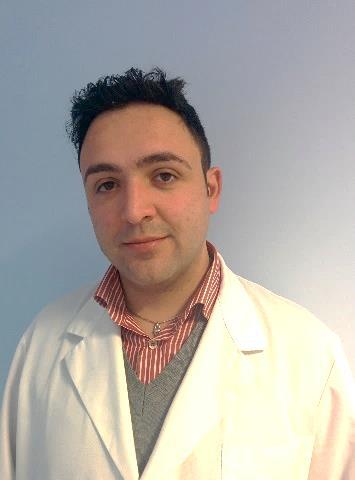 Dr Mattia Capulli (PostDoc in the Bone Biopathology Laboratory) – Dr. Mattia Capulli has expertise in bone cell biology, mouse bone and energy phenotyping, gene profiling analysis and elaboration of data by bioinformatics and biostatistics. He collaborated in different research projects, working with different animal models of bone diseases. Recently he worked as visiting fellow in the laboratories of Prof Kousteni and Karsenty in the Columbia Medical Center, New York, US, where he was trained on the generation of genetically modified animal models and on the techniques to investigate the bone and energy metabolism cross-talk.
Dr Mattia Capulli (PostDoc in the Bone Biopathology Laboratory) – Dr. Mattia Capulli has expertise in bone cell biology, mouse bone and energy phenotyping, gene profiling analysis and elaboration of data by bioinformatics and biostatistics. He collaborated in different research projects, working with different animal models of bone diseases. Recently he worked as visiting fellow in the laboratories of Prof Kousteni and Karsenty in the Columbia Medical Center, New York, US, where he was trained on the generation of genetically modified animal models and on the techniques to investigate the bone and energy metabolism cross-talk.
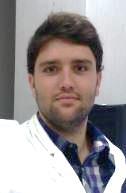 Antonio Maurizi (Research Technician in the Bone Biopathology Laboratory) – Antonio Maurizi is a student in Medical Biotechnology and a research technician in the laboratory headed by Prof. Anna Maria Teti at the University of L'Aquila. He has expertise in bone histology, mouse bone phenotyping, micorCT analysis and mouse behavioural tests. He recently collaborated in the characterization of the bone phenotype of an animal model of osteopetrosis generated in the Bone Biopathology Laboratory
Antonio Maurizi (Research Technician in the Bone Biopathology Laboratory) – Antonio Maurizi is a student in Medical Biotechnology and a research technician in the laboratory headed by Prof. Anna Maria Teti at the University of L'Aquila. He has expertise in bone histology, mouse bone phenotyping, micorCT analysis and mouse behavioural tests. He recently collaborated in the characterization of the bone phenotype of an animal model of osteopetrosis generated in the Bone Biopathology Laboratory


